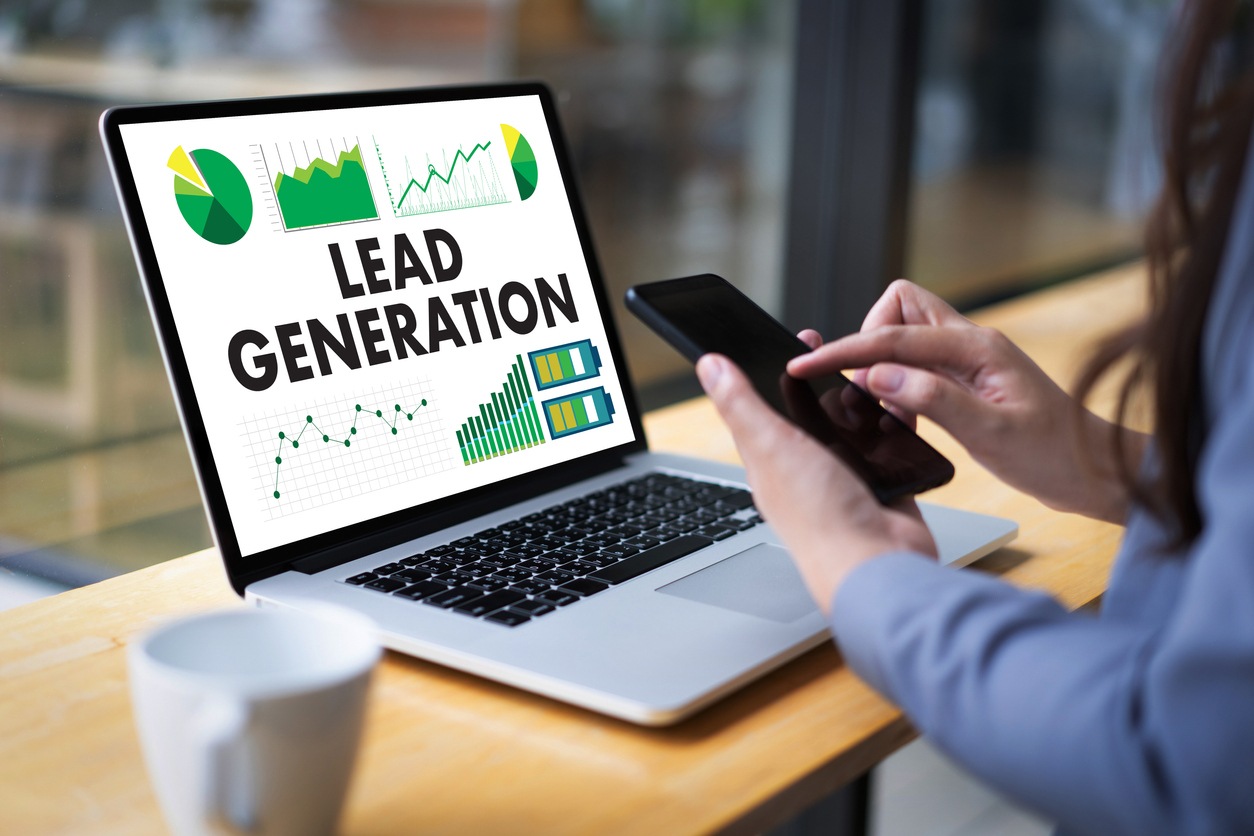
Takeaways from Google’s 2022 Lead Gen Summit
Everyone’s trying to maximize their ad budgets in 2023.
But in a world where ads are getting more expensive and competitive, doing so seems out of reach.
The key is getting in on cutting-edge technologies before everyone else. And lucky for you, I have insights from Google’s Lead Gen Summit to share.
Book a 30 minute call
Reserve 30 minutes with a strategist and get 30 hours worth of value.
First, I’ll share some learnings about the customer journey directly from Google, and then I’ll dive into ways to take advantage of the platform — techniques that have 10x’d our clients’ lead flow while decreasing their cost per lead.
Sound impossible? Read on to find out how.
Understanding the customer journey
One of the things Google repeatedly emphasized during the Summit was that customer journeys have not just elongated over time, they’ve also become increasingly convoluted.
They represented this idea as a “Messy Middle” — the entangled space between a purchase trigger and an actual purchase. And it’s messier than ever.
There’s research that customers are researching more before they make a purchase and have multiple options to consider.
Google also shared a quantitative representation of that idea: today, there are 238 million unique search paths every 30 minutes. Because so many different searches are happening, 93% of customer journeys are not replicable.
Leaning on Google, their algorithm, and amassed understanding can help you detangle this mess by identifying points of the journey customers are on and allows you to scale and gain efficiencies.
“Messy Middle” example
Say Sam works at a B2B software company, and he’s looking to streamline HR activity. He’s not necessarily going to Google “HR tech” or “HR software,” see an ad, click, and convert to a demo.
The reality is that Sam is going to Google around for a bit about his problem. He’ll search for the particular HR problems he’s having and read some articles on that. He’ll learn there’s software that can help him. And then maybe Sam will go on G2 or Capterra to read reviews.
But he knows you can’t always trust those reviews, so he will ask his colleagues for recommendations. Finally, he has an idea of what software he wants, gets targeted with an ad for it, and then converts to a demo.
Sam’s journey is just one way of arriving at a decision. Journeys will be different for everyone. The power of Google is it’s able to track and measure all of your prospects’ activity across their journey in a systematic way and surface the commonalities in a way no human can.
Trusting the machine learning algorithm
The data that Google has and is continuously collecting has gotten so big that it makes sense now to rely on the algorithm to make smart choices for you. But that doesn’t mean you’re off the hook.
For things like automated bidding to work, you need to make sure the right data is flowing in correctly and use your business acumen to tell the algorithm what signs actually matter.
You have to figure out what a quality lead is, and you have to know the signals of people who are likely to make their way to a purchase.
From there, Google can work its magic. The algorithm does more than any one person or collective group of individuals could ever do. It’s bidding in real-time with lots of data to back up its decisions.
Commonalities across the customer journey
Google conducted a cross-category, lead gen-specific study across virtually all industries. And they found commonalities across the board:
- Brand loyalty is decreasing: 1 in 2 customers are willing to leave a brand for a better offer. This may be disheartening, but I see it as an option to put your brand in front of someone who has never seen it before.
- 65% of customers say they haven’t made a purchase because they haven’t found the best value yet. This was highest in the legal, investment, and insurance verticals.
- Customers are considering 4 different providers on average — at least 3, max 5. In other words, you’ve got direct competition. And people are splitting their attention between you and them. Using Google’s Ad comparison feature and new Ads Library can give you inspiration for ads that set you apart.
- Customers spend 5 – 11 hours doing research before their purchase. For some verticals like finance, customers spend even more time researching. At a time when budgets are being cut, you need to draw their attention to your offer quickly.
- 1 in 5 customers say they haven’t made a purchase because they haven’t found a company they trust. Data privacy is front of mind. People will be wary of giving you information, and that should inform what’s on your lead intake forms.
- Only 11% of customers used a lead gen form in the research process. However, 90% of customers who did submit a form found it useful. “Forms” are not a bad word. In this long and widened journey, they serve as an opportunity to get your foot in the door when someone is on hour 1 of their research. They also open the door to retargeting plays.
These stats speak to the importance of marketing. When everybody’s bidding for the same keyword, how do you stand out?
Our job as marketers is more critical than ever. The ability to differentiate our brand with excellent creative and memorable messaging will allow us to punch through the noise.
Value + Experience + Trust = customer conversion
Value, experience, and trust were major points at the Summit, and it’s crucial to understand that they don’t work in isolation.
You should be thinking about them together. They act as an apparatus to help customers choose you over your competition. So what do each of these terms mean?
- Value – Value is balancing quality and price and Google search trends. In this economic environment, people want bang for their buck. One way to give them the best, cheapest option is to offer bundles. 68% of customers always tried to bundle to save. And I don’t know about you, but I almost always get swayed by the “buy two, get 20% off” promotions.
- Experience – When we talk about experience in this context, we’re talking about user experience. That will probably mean adjusting your forms. There shouldn’t be any barriers to entry. Even if you must have a multi-step form, inform the customer of where they are in the process, like “This is the first step out of X,” and assure them that it’ll go by quickly.
The second part to this is prioritizing a quick response. 85% of customers expect a reply within 1 day, and 50% expect a reply within the hour. In B2B, people don’t want to wait days just to schedule a demo. Tools like Chili Piper can completely eliminate that step, giving people direct access to your calendar to book a demo.
- Trust – 4 in 10 customers make a decision based on reputation and trust. So how can you establish that? One way is to build that into the lead form experience. For example, people care about what you do with their personal information. So reassure them that it will only be used for internal purposes. 55% of customers will share their information if you promise to protect it.
Another way to generate trust is to get customers the answers they want quickly. 50% of customers don’t mind sharing more information for better, faster service. Your messaging should convey that you prioritize fast responses and show genuine interest in their needs by asking personalized questions.
How to train Google
Google can take our information, synthesize it, and then find the people most likely to match our requirements. But the algorithm can only identify high-quality prospects if we tell it what to look for.
If you’re not already, start training Google to recognize quality leads. At WebMechanix, we do this by designing forms with lead signals built-in. We call this “revenue-driven optimization.”
We used this approach for one of my clients, a wealth management company. The first question on our form asks for an estimate of the customer’s investable assets. Whenever a lead has over $500,000 to invest, it makes sense for them to meet with an advisor, so we fire a conversion event.
Only 9 – 11% of the US population has that kind of money to invest. But using machine learning, we’ve been able to train Google to find them. And we’re massively over-indexing — 50% of the total leads our client receives are qualified.
Mapping out the lead-to-sale journey
Adjusting your forms is just the first step in training the algorithm. Another way to give Google better signals is to map the lead-to-sale journey. At the Summit, Google provided a helpful template that takes you through the math, going from what you’re willing to pay for a qualified lead to ideal conversion rates to the number of SQLs you’ll need to hit those numbers.
Leveraging first-party data
Another key point of leverage is your first-party data. Consider integrating your CRM with Google Ads and importing that data directly. Salesforce and HubSpot have built-in integrations. If you have a different CRM, you can still do an offline conversion import into Google.
From there, you can assign different values to each deal stage and optimize for ROAS. One caveat is that you need enough sales data for Google to hit conversion goals. Google recommends having at least 30 days worth of conversion data to start automating bidding. I suggest doubling that to find strong signals early in the customer lifecycle.
Make the leap to automation
Google’s not dumb. They know that as their platform becomes more competitive, it’ll be more expensive for advertisers across the board unless there’s a way to optimize for specific business outcomes. And I personally have seen it work wonders. Here’s an example from one of my accounts:
In April of 2021, I started using the target CPA automated bid strategy to bid toward qualified leads. And you can see a pretty immediate increase that month. Our qualified lead volume increased by 10x, while our cost per qualified lead decreased by 72%.
Set your Google Ads account up for success in 2023
Based on this information, I’d suggest you do 3 things right now to prepare for a cost-effective, successful next year:
- Map your lead-to-sale journey – Use Google’s free template and work out your funnel math. Then, understand the cost and lead thresholds you can withstand when projecting scale.
- Integrate your first-party (CRM) data – I said it already, but you need to integrate your CRM with Google Ads. This will help you understand how deals are progressing, ensure that Google is getting all the good data you’re collecting, and help you with attribution.
- Automate against business goals – If you have enough conversion volume, try an automated bid strategy. Let Google make the most of the data you’re able to provide.
The proof of these concepts is in the numbers. By embracing machine learning, we’ve seen accounts scale 5 to 10x in quality at substantially lower costs. So the sooner you implement these best practices, the better your outcomes will be.
Want to know more about how our team approaches digital strategy? Tune into our next Growth Clinic, or watch previous episodes on our YouTube channel.
And if you’re looking for experts to level up your marketing in 2023, schedule a call with us today.
Most newsletters suck...
So while we technically have to call this a daily newsletter so people know what it is, it's anything but.
You won't find any 'industry standards' or 'guru best practices' here - only the real stuff that actually moves the needle.






